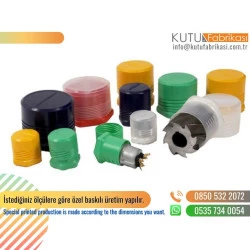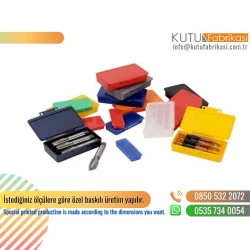Plastic Boxes (6)
What is plastic injection?
Unlocking the Potential of Diverse Materials in Box Manufacturing
The packaging industry has long understood that the first interaction a customer has with a product is through its packaging. This is why the art of box manufacturing has grown to incorporate a variety of materials to suit any need. Whether your company specializes in gourmet pastries or robust electronics, understanding the material options available for creating the perfect box can significantly impact customer satisfaction and product safety.
- Eco-Friendly Choices with Recyclable Materials
- Customization for Enhanced Brand Recognition
- Material Durability for Secure Transportation
The Versatility of Box Manufacturing Materials
One of the key factors in box manufacturing is selecting the right material for the product. Is the tactile luxury of velvet the best choice for high-end jewelry boxes, or would the rustic appeal of wood boxes be more suitable for a vintage-inspired brand? The materials used, from plastic boxes to elegant metal casings, can lend not only functional benefits but also help tell a brand's story.
Delivering Excellence Through Export-Ready Packaging
There's a growing demand for quality export-ready packaging. Have you considered how well your packaging travels? From temperature fluctuations to rough handling, the right packaging material ensures your products arrive in excellent condition, anywhere in the world.
The Role of Different Packaging Materials in Box Manufacturing
How do paper and cardboard compare to plastic boxes when it comes to packaging? While paper and cardboard offer sustainable and often cost-effective options, plastic boxes step up as the sturdy contenders, especially for items that demand a higher level of moisture resistance and durability. What are the advantages of using metal or wood in box manufacturing? Metal brings an unmatched sleekness and security to the table, making it perfect for luxury goods, whereas wood offers a timeless look and sturdy composition favored for artisanal or organic products. How has the use of velvet in box manufacturing evolved to cater to modern needs? Velvet-lined boxes now feature improved structural support to maintain their plush look without compromising on protection, blending opulence with practicality. Can PVC boxes be a viable option for businesses looking for robust and clear packaging solutions? Absolutely, PVC boxes provide the clarity to showcase the product while offering a level of protection similar to that of hard plastics, making them ideal for a wide range of uses.
Did you know that some innovative packaging solutions now include smart technology? Imagine receiving a box that interacts with your smartphone, providing product details or verifying its authenticity. In the competitive landscape of retail, could integrating such technologies into your packaging give you the edge?
When pondering your next product line, what speaks to you more? The sustainable allure of recyclable materials or the premium finish that comes with high-end packaging? The choices you make today will define your brand's journey tomorrow. Choose wisely, and ensure your products are not just packaged but presented with the highest standards in mind.
Plastic injection is the process of melting plastic raw materials and injecting them into a mold. This process is widely used to mold plastic materials into desired shapes and to enable mass production of various plastic products.
Plastic injection process is performed with automatic or semi-automatic injection machines. The process usually consists of the following steps:
- Plastic material preparation: Plastic granules or powders are put into the hopper or hopper in the injection machine. These materials will be used for heating and melting.
- Material melting: Plastic materials are heated and melted by a screw (or propeller) in the cylinder. This molten plastic becomes ready to be injected into the mold.
- Injection process: The prepared molten plastic is injected into the mold under high pressure with an injection plunger or screw. This process allows the plastic material to completely fill the cavity inside the mold.
- Cooling and hardening: The injected plastic is left to cool in the mold. When the plastic cools down, it hardens and takes the desired shape.
- Removal of the part: The plastic product that has hardened in the mold is removed from the mold and cleaned. Then it becomes ready for use.
Plastic injection enables mass and precise production of plastic products. With this method, various plastic products such as toys, household appliances, automotive parts, medical devices, packaging materials can be produced. Therefore, the injection molding method is an important technology that is widely used in the modern manufacturing industry.








